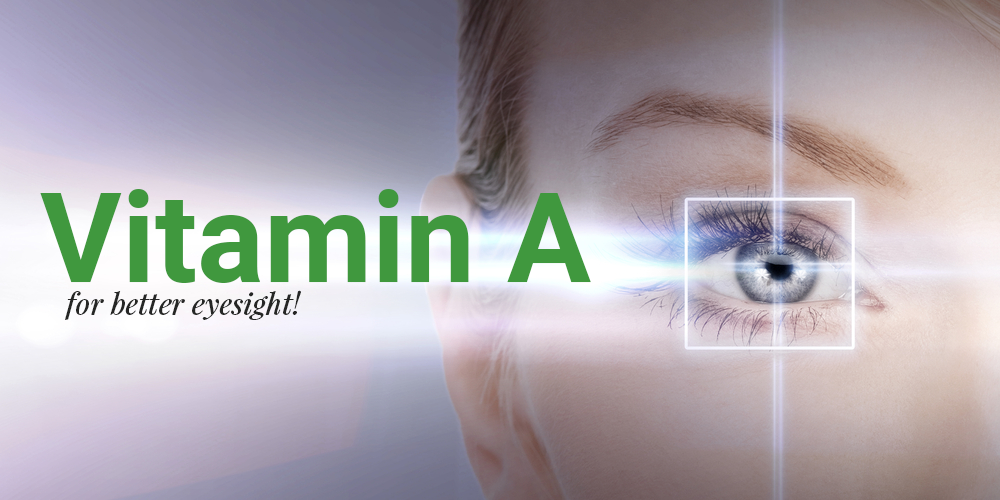
Vitamin A for Eye Health
Share
Part of a family of substances called retinols, Vitamin A is important to our overall health and, specifically, our skin, immune system, and eyes.
When hearing about Vitamin A, most people think of carrots. It's important to know that Vitamin A can be acquired from both plant and animal sources of food, and the source can make a difference in the type and amount of Vitamin A the body absorbs. In plant foods (including carrots), Vitamin A is in a form called carotenoids and has to be converted from this form to its active form, retinol. When acquired from animal sources, Vitamin A is more readily available to the human body. Our daily diet should include a mix of plant and animal-based foods.
The following foods provide Vitamin A in its most readily available form; they are listed in each category according to their highest level of readily absorbable Vitamin A content. (This is not a complete list, but a good sampling of high Vitamin A foods):
Meat and Fish
Beef Liver
Cod Liver Oil
King Mackerel
Salmon
Vegetables
Sweet Potato
Winter Squash
Turnip Greens
Sweet Red Pepper
Spinach
Fruits
Mango
Cantaloupe
Grapefruit
Cheese
Goat Cheese
Cheddar
Roquefort Cheese
There are dozens of other fruits, veggies, and seafood sources of Vitamin A. Those listed above contain 16% (cheese, fruit) and up to 200% (some veggies and fish/meat) of the daily recommended adult intake of Vitamin A in one serving. The daily recommendation for children changes from birth through age 18, so it's best to check with your healthcare provider before giving Vitamin A to a child. While your practitioner may want to adjust the dose, here is a quick reference for daily recommendations: https://ods.od.nih.gov/factsheets/VitaminA-HealthProfessional/
Even if you're eating a variety of organic, whole foods, it's possible you're not getting enough Vitamin A. For some people, the body isn't able to convert Vitamin A due to a problem with absorption or because of a medical condition (e.g., cystic fibrosis). Others may have a genetic factor that doesn't allow them to convert Vitamin A. These situations reduce the amount available for the body to utilize, which often leads to a nutrient deficiency that may show up as health conditions of the eyes, skin, or immune function.
Vitamin A supplements are widely available but the purity and consistency of the supplement can vary. Some supplements will contain preformed Vitamin A; some will have beta carotenes, and some will contain a combination. Dosing Vitamin A is highly individualized and because it is a fat-soluble vitamin, it can accumulate to toxic levels in the body. Women who are of childbearing age or pregnant should be under a physician's care if taking Vitamin A. As always, speak to your holistic physician about the best form and dose of a Vitamin A supplement for your needs.
Get 10000 IU's of Vitamin A in our Multivitamin Patch!


Resources
Rasmussen HM, Johnson EJ. Nutrients for the aging eye. Clin Interv Aging. (2013) 8:741-8.
Vitamin A Fact Sheet For Health Professionals: https://ods.od.nih.gov/factsheets/VitaminA-HealthProfessional/
The Journal of Nutrition, Volume 142, Issue 1, 1 January 2012, Pages 161S–165S, https://doi.org/10.3945/jn.111.140756
HealthLine.com "20 Foods that are High in Vitamin A" https://www.healthline.com/nutrition/foods-high-in-vitamin-a#section2
